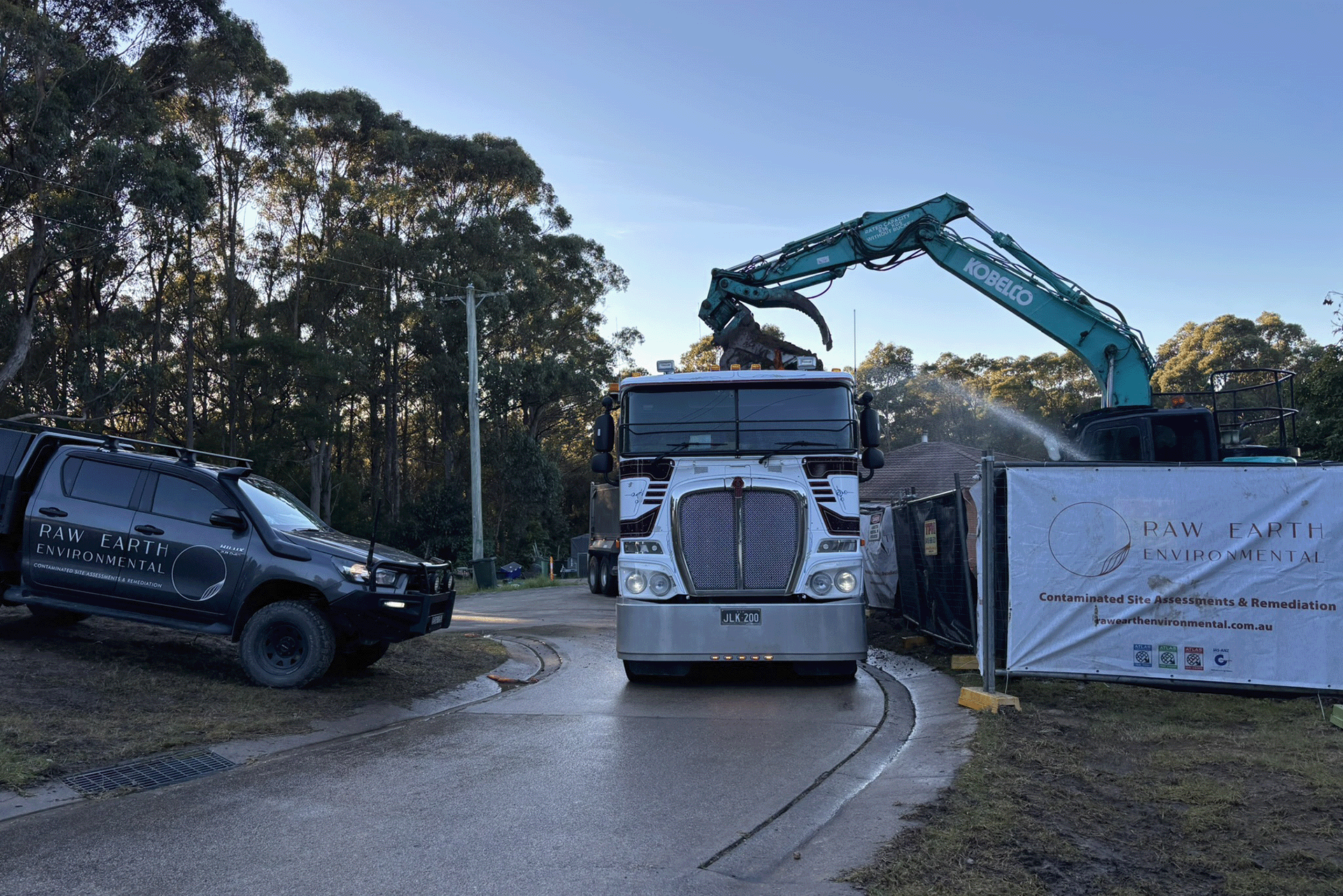Summary
Hazardous waste includes substances and materials that pose a significant risk to human health or the environment if not handled correctly. Examples include asbestos, lead-contaminated soils, hydrocarbons, solvents, and PFAS-impacted water. Proper classification, tracking and disposal are essential for compliance and environmental protection across Australia.
Definition
Hazardous waste is waste that, by its chemical, physical or biological properties—such as toxicity, corrosivity, flammability or ecotoxicity—poses a risk to human health, property or the environment. It is subject to specific handling, transport and disposal regulations under Australian law.
Why It Matters
In environmental consulting, land remediation and compliance, hazardous waste management is a cornerstone of responsible site and project governance.
- Protecting health and the environment – Improper handling of hazardous waste can contaminate soil and groundwater, release toxic vapours, cause fires or chemical reactions, and expose workers and communities to carcinogens or heavy metals.
- Regulatory compliance – The Hazardous Waste (Regulation of Exports and Imports) Act 1989 and state regulations (e.g., Protection of the Environment Operations Act 1997 NSW) set out strict rules for the classification, movement and disposal of hazardous waste.
- Project impact and liability – For developers and environmental professionals, failure to identify and manage hazardous waste can delay approvals, trigger clean-up notices, and increase remediation costs.
- Resource recovery & sustainability – Identifying and segregating hazardous materials from non-hazardous waste enables safer, more cost-effective recycling and disposal routes, supporting circular-economy goals.
- Due diligence & risk management – Recognising hazardous waste early in site assessment prevents compliance breaches and mitigates project risk during excavation, demolition, or remediation activities.
When It’s Required
Hazardous waste protocols apply across a variety of project and operational scenarios:
Typical triggers:
- Demolition and redevelopment – Older structures or brownfield sites often contain asbestos, lead-based paint or contaminated soils.
- Environmental Site Assessments (ESA/DSI) – Investigations revealing chemical or hydrocarbon contamination.
- Industrial and manufacturing operations – Generation of solvents, metal residues, acids, alkalis or process sludges.
- Remediation and earthworks – Excavation of contaminated soil or dewatering of impacted groundwater.
- Waste transport and disposal – All hazardous waste in NSW, VIC and other states must be tracked using licensed carriers and disposal facilities.
- Export/import scenarios – Any cross-border movement of hazardous waste must comply with the Hazardous Waste Act and Basel Convention obligations.
Common Examples of Hazardous Waste
Hazardous waste encompasses a wide range of materials generated during industrial, construction, remediation, or demolition activities, including:
- Asbestos-containing material (ACM) – Common in older buildings (roof sheeting, pipe lagging, floor tiles); requires licensed removal and disposal.
- Lead-contaminated soil or paint waste – Found on historical industrial sites, smelters, or older housing stock.
- Hydrocarbon-impacted soils – Resulting from leaks or spills of petrol, diesel or lubricants, often associated with Underground Petroleum Storage Systems (UPSS).
- PFAS-contaminated soil or water – Arising from firefighting foams or industrial runoff.
- Waste oils and solvents – Generated from mechanical, printing or manufacturing processes.
- Heavy-metal sludges and residues – Containing mercury, cadmium, zinc or chromium from plating, mining or electrochemical activities.
- Corrosive acids and alkalis – From laboratory, manufacturing or battery-recycling operations.
- Pesticides and chemical containers – Agricultural and chemical industry waste streams requiring controlled treatment.
- Clinical and pharmaceutical waste – Healthcare by-products that require sterilisation and regulated disposal.
These examples illustrate the diversity of hazardous waste sources and the importance of correct identification and classification through Soil & Waste Classification protocols.
How We Can Help
Effective hazardous-waste and asbestos management is essential for environmental protection, regulatory compliance and responsible project delivery. By correctly identifying, testing and handling materials such as asbestos, lead, hydrocarbons, PFAS and other chemical residues, Nova Group Pacific helps safeguard project integrity, protect the environment and support successful approval outcomes.
We provide specialist hazardous-waste consulting as part of our integrated environmental, remediation and compliance services.
Our capabilities include:
- Waste characterisation and classification – Laboratory testing and waste classification aligned with EPA and NEPM Guidelines to determine whether a waste is general solid, restricted solid or hazardous.
- Waste management planning – Preparation of hazardous waste management plans, waste tracking, and regulatory liaison with licensed transporters and disposal facilities.
- Contaminated-soil handling – Practical solutions for excavation, storage and off-site transport of hazardous materials.
Contact Nova Group Pacific for expert guidance in identifying, managing and disposing of hazardous waste safely, efficiently and in full compliance with Australian regulations.
Related Terms and Concepts

 Get Your Free Site Assessment
Get Your Free Site Assessment









 Get Your Free Site Assessment
Get Your Free Site Assessment









.png)

.jpg)



.jpg)
.jpg)




